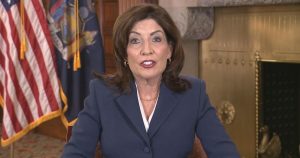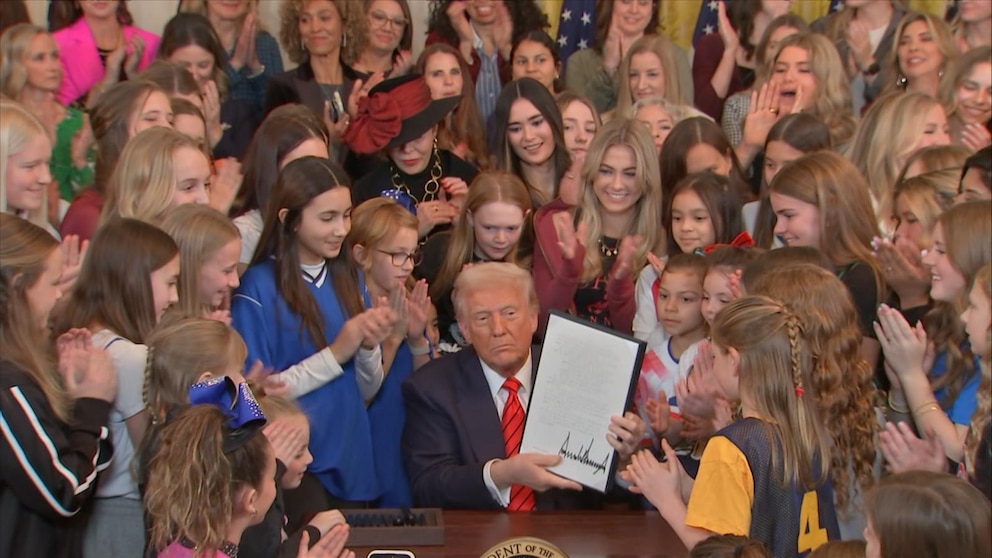Trump Signs Executive Order Banning Transgender Athletes from Women’s Sports
Introduction to the Executive Order
On February 5, 2025, President Donald Trump signed a controversial executive order that prohibits transgender athletes from participating in women’s sports. This move was a central promise of his 2024 presidential campaign and has sparked intense debate across the nation. The order aims to address concerns about fairness in women’s athletics, but critics argue that it discriminates against transgender individuals and violates their rights.
The Political Context and Campaign Promise
The executive order reflects a broader cultural and political debate about gender identity and sports participation. During his 2024 campaign, Trump repeatedly vowed to protect women’s sports by banning transgender athletes from competing in categories aligned with their gender identity. Supporters of the ban argue that it ensures fairness and maintains the integrity of women’s sports, as they believe biological differences give cisgender women a disadvantage when competing against transgender athletes.
However, opponents argue that the ban is discriminatory and attacks the rights of transgender individuals to participate in sports. Many in the LGBTQ+ community see this as a direct assault on their inclusion and equality. The issue has become a lightning rod in the broader debate over transgender rights, with the executive order likely to face legal challenges and public pushback.
The Impact and Arguments Surrounding the Ban
The executive order has significant implications for transgender athletes, who will now be barred from participating in women’s sports at various levels, including school, college, and professional leagues. While some argue that the ban is necessary to preserve fairness, others point out that the exclusion of transgender athletes undermines their right to participate in activities that are central to their identity and well-being.
Proponents of the ban often cite concerns about competitive advantages, though scientific evidence on the issue is mixed. Some studies suggest that transgender women may retain certain physical advantages even after hormone therapy, while others argue that these advantages are not significant enough to warrant a blanket ban. The issue is further complicated by the fact that not all sports or situations are the same, and a one-size-fits-all approach may not be appropriate.
Legal and Ethical Challenges
The executive order is likely to face legal challenges, as many argue that it violates Title IX, a federal law that prohibits sex-based discrimination in education, including sports. Transgender rights organizations have already vowed to take legal action, arguing that the ban is unconstitutional and discriminatory. Additionally, the order could lead to conflicts between federal and state policies, as some states have laws that explicitly allow transgender athletes to compete in alignment with their gender identity.
The ethical implications of the ban are also significant. Critics argue that it sends a harmful message about the exclusion of transgender individuals from society and perpetuates discrimination. On the other hand, supporters believe that the ban is a necessary step to ensure fairness for cisgender women in sports. The debate highlights the tension between protecting the rights of transgender individuals and addressing concerns about competitive fairness.
Public Reaction and the Broader Cultural Debate
The public reaction to the executive order has been deeply divided. Supporters of the ban, many of whom identify as conservatives, see it as a victory for fairness and a return to traditional values. They argue that women’s sports should be reserved for biological females and that allowing transgender athletes to compete undermines the achievements of female athletes.
On the other hand, opponents of the ban, including many progressives and LGBTQ+ advocates, view it as a regressive and discriminatory move. They emphasize the importance of inclusion and argue that transgender athletes should have the opportunity to compete in a way that aligns with their gender identity. Many also point out that the ban could have negative mental health impacts on transgender individuals, particularly young athletes who may feel excluded and marginalized.
The Future of Transgender Athletes and Inclusion in Sports
The signing of this executive order marks a significant shift in the debate over transgender inclusion in sports, but the issue is far from settled. Legal challenges, public outcry, and ongoing scientific research will likely shape the future of this policy. Advocates for transgender rights are calling for greater inclusivity and more nuanced approaches that balance fairness with equality.
At the same time, supporters of the ban are pushing for similar measures at the state and local levels, leading to a patchwork of policies that could vary widely across the country. The debate over transgender athletes in women’s sports is just one aspect of a broader cultural conversation about gender identity, inclusion, and equality. As the nation grapples with these complex issues, the impact on transgender athletes and their communities will be a critical area of focus in the years to come.
In conclusion, President Trump’s executive order banning transgender athletes from women’s sports is a polarizing move that reflects deep divisions in American society. While supporters argue that it protects fairness in women’s athletics, critics see it as a discriminatory attack on transgender individuals. The order is likely to face legal challenges and public pushback, as the debate over transgender rights and inclusion continues to evolve.










